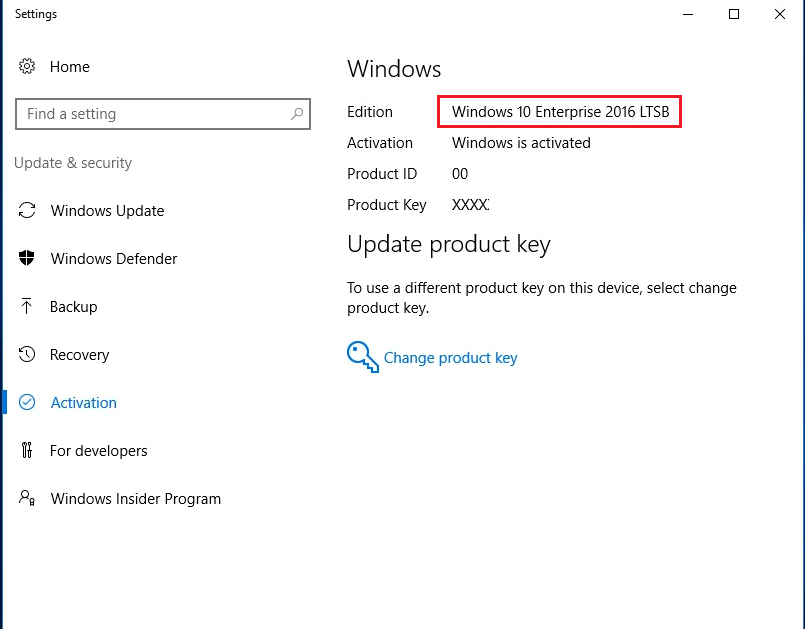

- #What is windows 10 ltsb update
- #What is windows 10 ltsb software
- #What is windows 10 ltsb windows 7
- #What is windows 10 ltsb professional
#What is windows 10 ltsb software
Do my applications support the channel and version? Ask the software vendors.What Windows 10 versions are supported by my VDI brokers and software such as Citrix XenDesktop, VMware Horizon, App Volumes and NVIDIA for example?.Define the business scope, requirements, constrains, assumptions and risks.When deciding what channel and Windows 10 version release to use, ask yourself the following questions: Windows 10 Enterprise has for example more advanced security and management functions and support for LTSC.
#What is windows 10 ltsb professional
This requires Windows Update OS requirements for Office 365 ProPlus which means you’re stuck with the SAC channel.įor choosing between the Professional and the Enterprise edition there is a comparison table available link. Office 365 ProPlus delivers cloud-connected and always up-to-date versions of Office desktop apps. But more and more customers are migrating to Office 365. So a stable OS that requires less patching and overhead can be more relevant than having the latest features which involves more management, testing and overhead. Ask yourself the question: Why do I use a Windows OS? My personal answer on this question is: Because I need to run legacy Windows apps. The advice from Microsoft is to use SAC channel over a LTSB/LTSC channel. OneDrive files on demand that is introduced in release 1709 is not included in LTSB 1607.

Includes non-business apps like Xbox, Minecraft, Candy crush On Janu, Office 365 ProPlus will be no longer supported on LSTC or the older LTSB version ( link)

Support for new hardware (silicon) and Surface Latest new features or security enhancements Here is a quick comparison table between the two channels:ġ8/30 months (Windows 10 Support lifecycle, link.) So we can choose between two servicing channels.
#What is windows 10 ltsb windows 7
LTSC comes with 10 years support cycle and looks like an Operating System release cycle before Windows 10 such as Windows 7 for example. The typical use cases are embedded systems such as manufacturing or medical equipment and KIOSK systems that don’t run Office and receive new feature updates every 2 to 3 years.


 0 kommentar(er)
0 kommentar(er)
